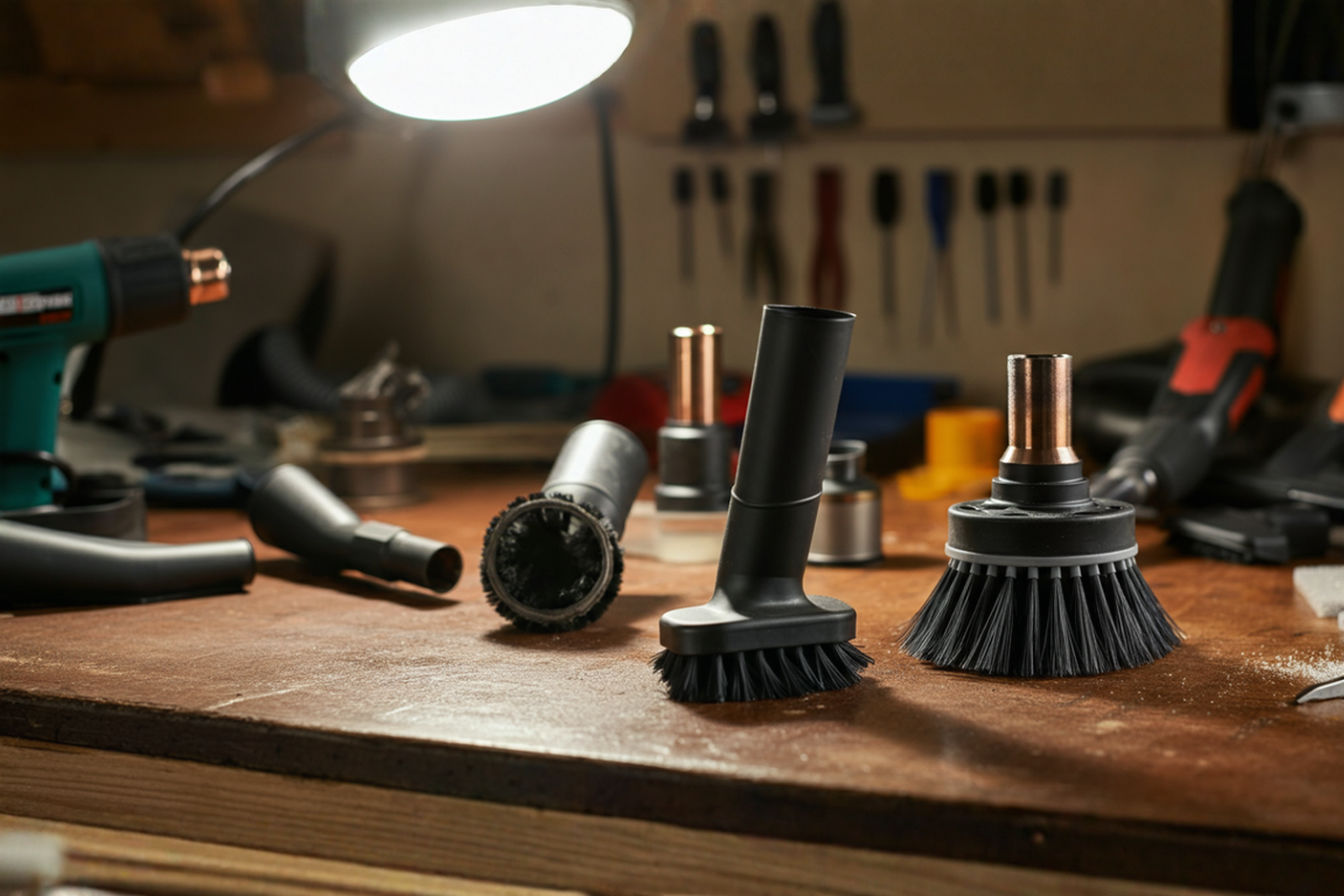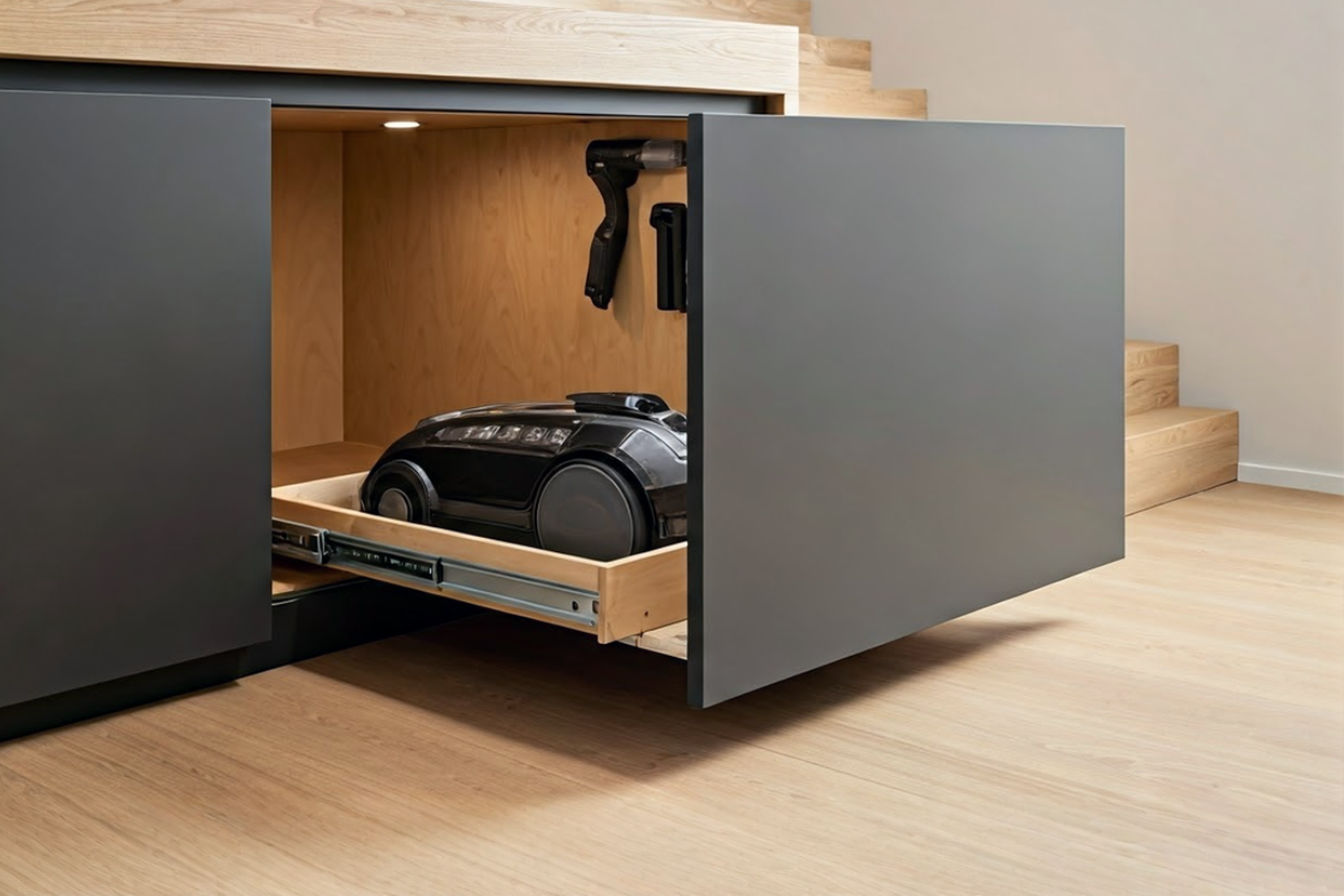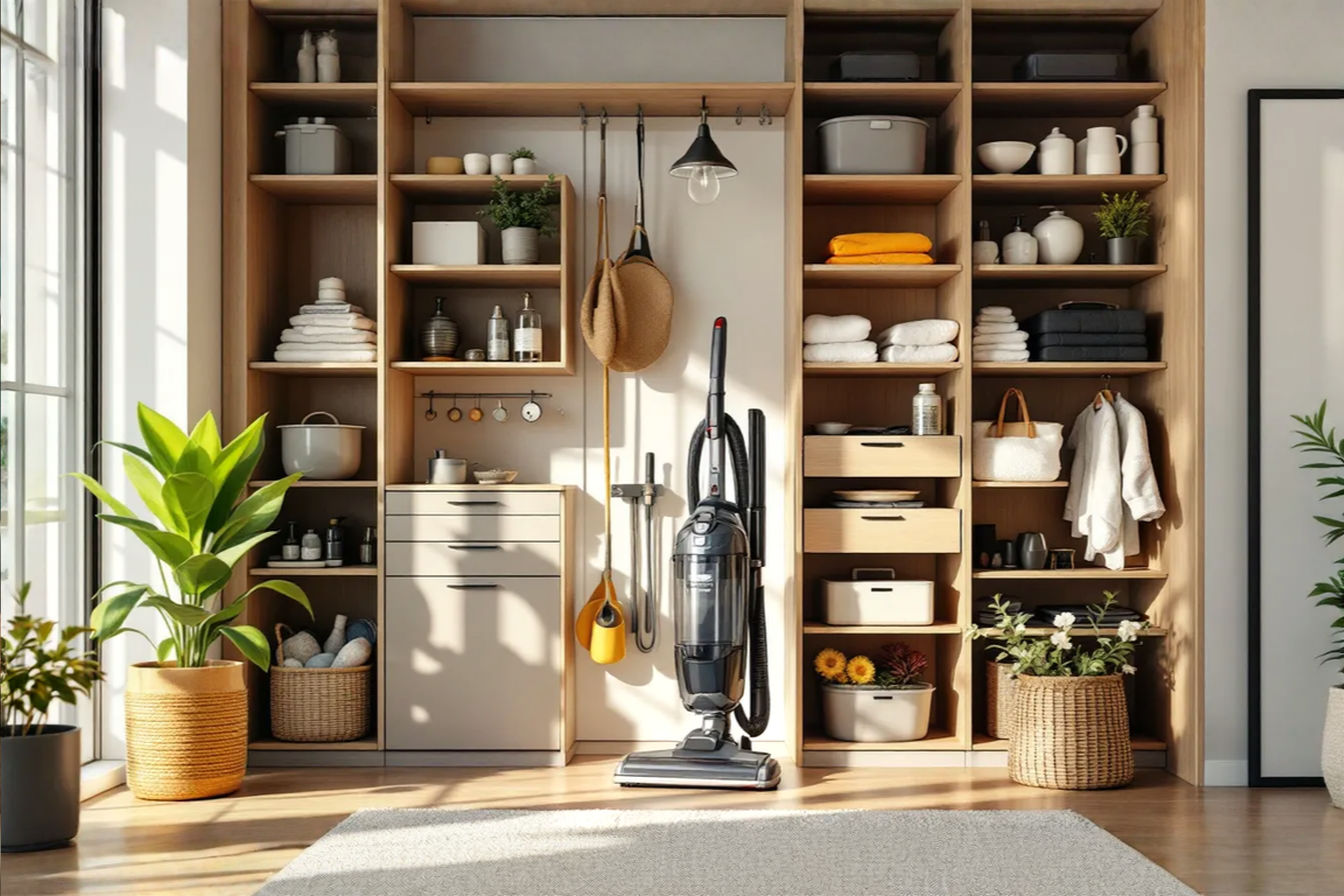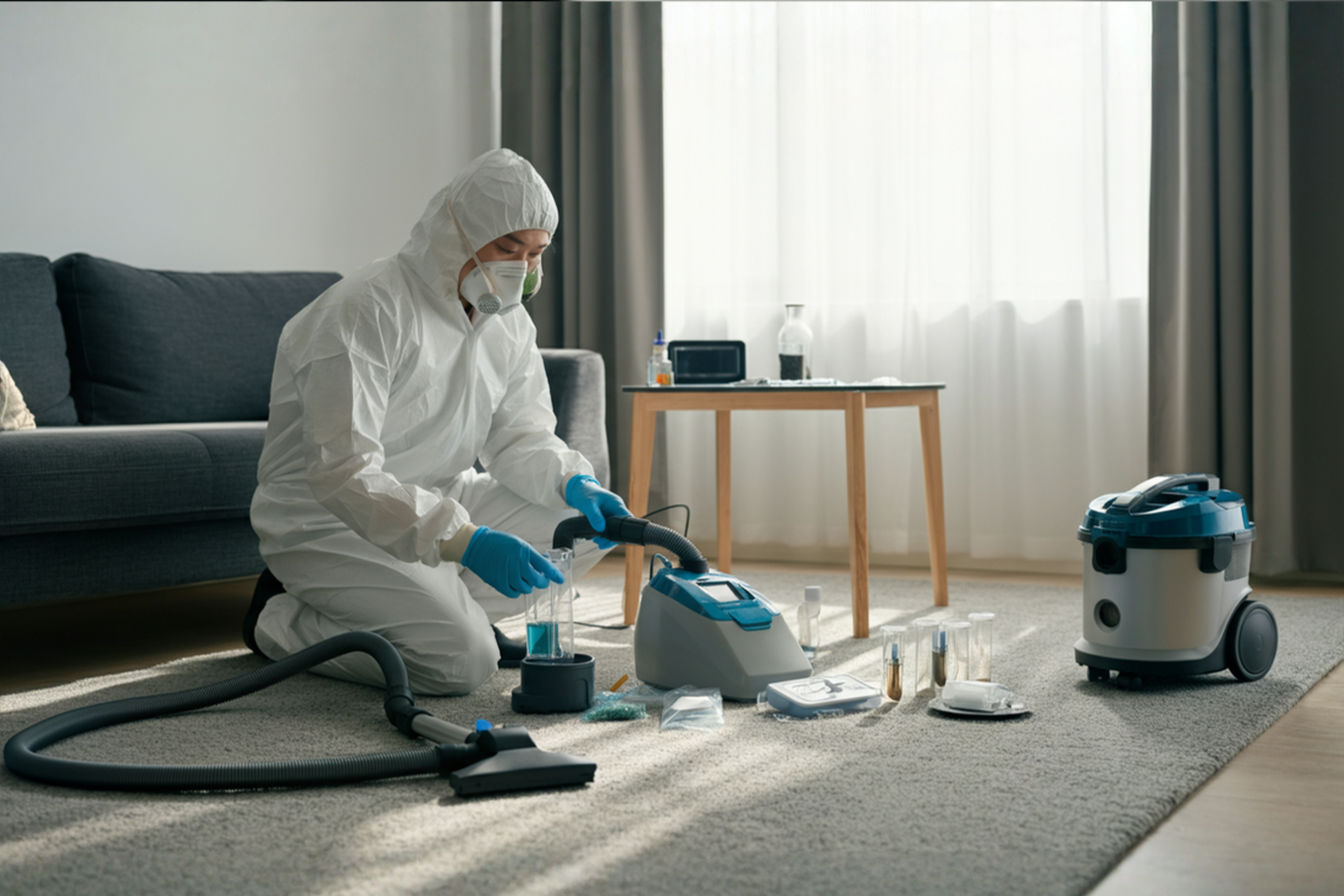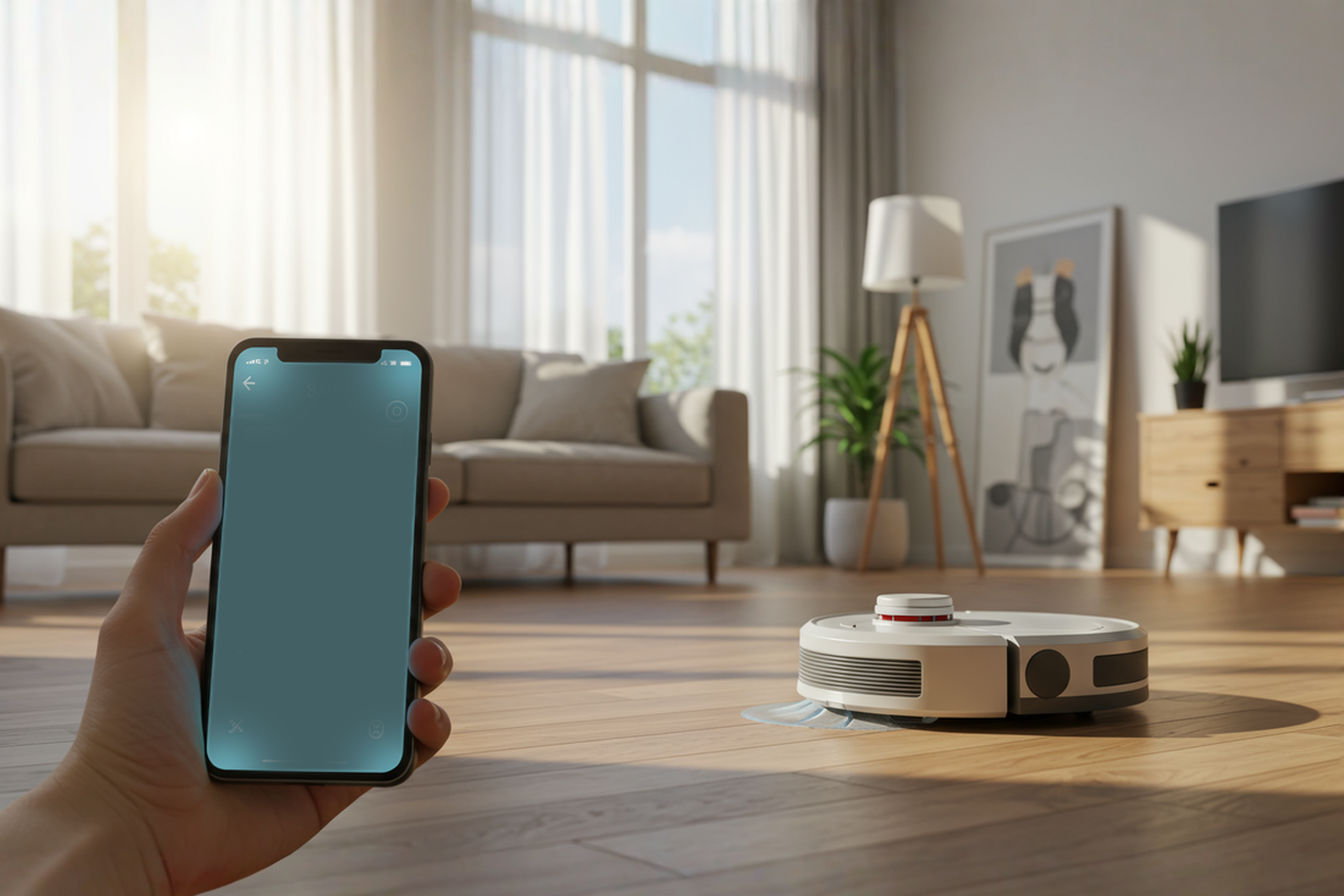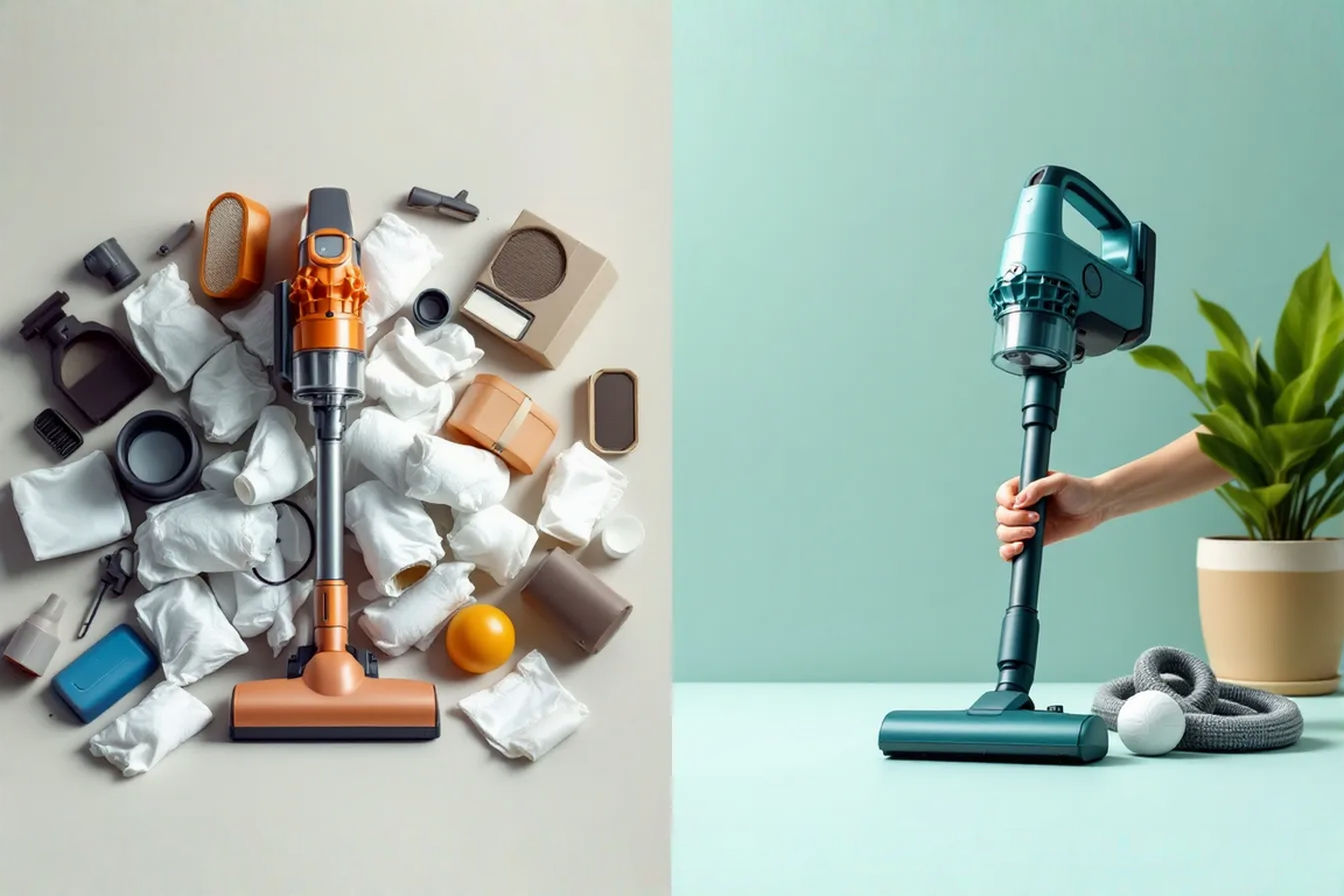Vacuum Cleaner Attachment Customization: Adapting Tools for Specialized Cleaning
Ever wished your vacuum could reach that impossible corner? Learn how to create custom attachments that solve your toughest cleaning challenges with simple modifications.
This post may contain affiliate links. If you make a purchase through these links, we may earn a commission at no additional cost to you.
Tired of vacuum attachments that can’t reach tight spaces or handle specific cleaning tasks? Welcome to the world of vacuum attachment customization, where ordinary cleaning tools become precision instruments tailored to your unique needs.
Vacuum cleaner attachment modification opens up possibilities that standard manufacturers never considered. Whether you’re tackling pet hair embedded in car upholstery or dust in delicate electronics, customized attachments deliver targeted cleaning power where generic tools fall short. This comprehensive guide reveals professional techniques for adapting and creating vacuum attachments that transform your cleaning routine.
Understanding Attachment Basics and Modification Potential
Standard vacuum cleaner attachments serve general purposes, but they often lack the precision required for specialized cleaning challenges. Each attachment affects airflow differently, creating opportunities for enhancement through careful modification.
Analyzing Standard Attachments
The crevice tool, brush attachment, and upholstery nozzle form the basic trio in most vacuum sets. These tools rely on specific air channel designs that either concentrate or diffuse suction power. Understanding these airflow patterns helps identify where modifications can improve performance.
Material Compatibility for Modification
Plastic attachments offer the best modification potential due to their workability. ABS plastic, commonly used in vacuum accessories, accepts drilling, sanding, and heat forming without compromising structural integrity. Metal attachments require specialized tools but provide superior durability for high-stress applications.
Identifying Enhancement Opportunities
Look for areas where standard attachments fail to reach or clean effectively. Common improvement areas include:
- Extended reach capabilities for high or deep spaces
- Reduced nozzle width for tight clearances
- Added bristles for specific surface textures
- Improved angle adjustments for awkward corners
Essential Tools and Materials for Customization
Successful vacuum attachment customization requires proper equipment and materials. Building a basic workshop enables safe, effective modifications that maintain or enhance suction performance.
Required Workshop Equipment
A heat gun forms the cornerstone of any attachment customization toolkit. This versatile tool softens plastic for precise forming and shaping. Additional essential equipment includes:
- Rotary tool with various cutting and grinding bits
- Digital calipers for accurate measurements
- High-temperature adhesives designed for plastic bonding
- Fine-grit sandpaper for finishing smooth edges
Safety Gear Requirements
Proper protective equipment prevents injuries during modification projects. Always wear safety glasses when cutting or grinding materials. Heat-resistant gloves protect hands during heat forming operations, while a dust mask prevents inhalation of plastic particles.
Compatible Materials Selection
Choose materials that withstand vacuum suction forces without deforming. High-density polyethylene (HDPE) offers excellent durability for structural modifications. Food-grade silicone creates flexible extensions that conform to irregular surfaces while maintaining suction.
Custom Solutions for Hard-to-Reach Areas
Modifying attachments for extended reach solves one of the most common cleaning challenges. These customizations allow thorough cleaning in spaces standard tools can’t access.
Extended Reach Modifications
Creating longer attachment necks requires careful balance between reach and suction power. PVC pipe sections make excellent extension materials due to their lightweight nature and smooth interior surface. Ensure all connections remain airtight to maintain optimal performance.
Narrow Gap Adaptations
Standard crevice tools often prove too wide for truly tight spaces. Heating and reshaping the tip creates custom widths as narrow as 1/8 inch. This precision allows cleaning between appliances, under refrigerators, and inside electronic equipment.
Corner and Edge Enhancements
Right-angle attachments revolutionize corner cleaning efficiency. Modifying straight nozzles into angled configurations involves careful heat forming to maintain proper airflow. Adding brush strips along edges improves dust collection from baseboards and molding.
Specialized Surface Attachment Adaptations
Different surfaces demand unique cleaning approaches. Custom attachments address specific material requirements while protecting delicate finishes.
Delicate Surface Modifications
Sensitive surfaces like piano keys or antique furniture need ultra-soft brush attachments. Combining natural bristles with reduced suction ports prevents damage while removing dust effectively. Microfiber strips can be added to standard brushes for enhanced gentle cleaning.
High-Pile Carpet Solutions
Deep-pile carpets benefit from modified brush rolls that penetrate dense fibers. Extending bristle length and adjusting spacing improves dirt extraction without tangling. Motorized modifications add agitation power for superior cleaning results.
Hard Floor Customizations
Smooth floor attachments often skip over textured surfaces. Adding flexible rubber squeegees or specialized brush patterns improves cleaning performance on tile grout, concrete, and textured vinyl. Adjustable suction ports prevent attachment sticking while maintaining efficiency.
Pet Hair Removal Enhancements
Pet hair presents unique challenges requiring specialized solutions. Rubber finger attachments grip and lift fur more effectively than standard brushes. Modifications that create static electricity enhance hair collection without clogging suction channels.
Advanced Customization Projects
Advanced modifications push the boundaries of vacuum attachment functionality. These projects combine multiple features for versatile cleaning solutions.
Multi-Function Attachment Creation
Combining brush, scraper, and suction functions into single attachments saves time during complex cleaning tasks. Modular designs allow quick function changes without switching entire attachments. Integrated tool storage keeps necessary components readily available.
Power Boost Modifications
Concentrating airflow through smaller orifices increases suction power for specific applications. Venturi effect principles guide these modifications, creating high-velocity air streams that dislodge stubborn debris. Flow control valves allow adjustment between power and broader coverage.
Water Pickup Adaptations
Converting dry vacuum attachments for wet applications requires careful sealing and material selection. Corrosion-resistant components prevent rust formation, while float valves protect the vacuum motor from water damage. These modifications enable emergency water cleanup and wet surface cleaning.
Problem-Solving Through Custom Attachments
Specific cleaning challenges inspire unique attachment solutions. Custom designs address problems that standard tools can’t handle effectively.
Vehicle Interior Solutions
Car interiors contain countless hard-to-clean spaces requiring specialized attachments. Curved nozzles reach under seats, while brush modifications clean ventilation grilles without damage. Flexible extensions navigate around obstacles for thorough cleaning.
Workshop Debris Design
Workshop environments produce various debris types requiring targeted collection methods. Metal shavings, sawdust, and fine powders each need specific attachment features. Magnetic attachments capture metal particles before they enter the vacuum system.
Electronics Safe Tools
Sensitive electronic equipment demands static-free cleaning solutions. Conductive materials prevent static buildup, while ultra-soft brushes avoid component damage. Variable suction control protects delicate circuitry during cleaning operations.
Testing and Safety Considerations
Modified attachments require thorough testing before regular use. Proper evaluation ensures safety and effectiveness.
Performance Testing Methods
Airflow meters measure suction efficiency after modifications. Visual inspection identifies potential stress points or weak connections. Regular testing prevents unexpected failures during critical cleaning tasks.
Safety Testing Procedures
Stress testing reveals structural weaknesses before they cause problems. Heat-modified components undergo temperature cycling to ensure stability. Sharp edges receive careful finishing to prevent injury or damage.
Maintaining Proper Airflow
Modifications must maintain adequate airflow to prevent motor strain. Calculate total suction area before and after changes to ensure compatibility. Relief valves protect against excessive restriction that could damage vacuum systems.
Maintenance and Storage of Custom Attachments
Proper care extends the life of modified attachments while ensuring continued performance.
Cleaning Modified Tools
Regular cleaning prevents debris buildup that reduces effectiveness. Disinfectant solutions safe for plastics maintain hygiene without damaging modifications. Thorough drying prevents mold growth in complex attachment designs.
Storage Solutions
Custom attachments often require specialized storage to prevent damage. Foam inserts protect delicate modifications, while hanging systems keep tools organized and accessible. Climate-controlled storage prevents material degradation.
Regular Inspection Requirements
Monthly inspections identify wear before failures occur. Check adhesive bonds, structural integrity, and moving parts for signs of deterioration. Replace worn components promptly to maintain performance and safety.
Conclusion and Expert Tips
Vacuum attachment customization transforms standard cleaning tools into specialized solutions for unique challenges. The techniques covered enable creation of attachments tailored to specific cleaning needs while maintaining safety and performance.
Remember that successful modifications balance innovation with practicality. Start with simple projects before attempting complex designs. Always prioritize safety in both creation and use of custom attachments. Through experimentation and refinement, your customized vacuum attachments will solve cleaning problems that standard tools never could address.
Keep exploring new modification techniques as cleaning challenges arise. The skills developed through attachment customization apply to many household maintenance tasks, making this valuable knowledge for any dedicated DIY enthusiast.

